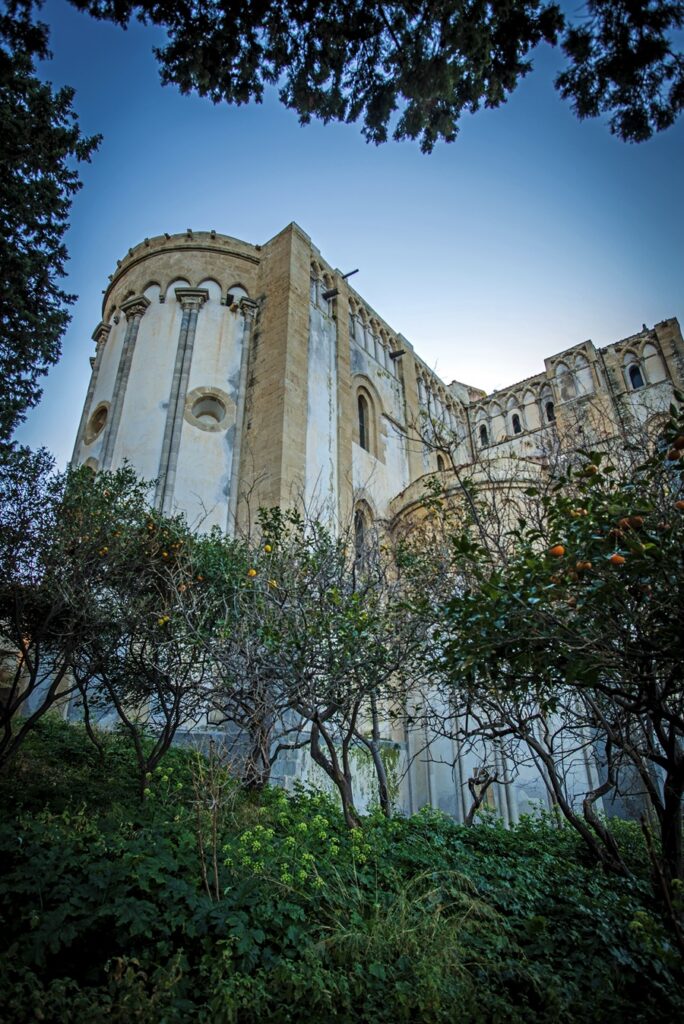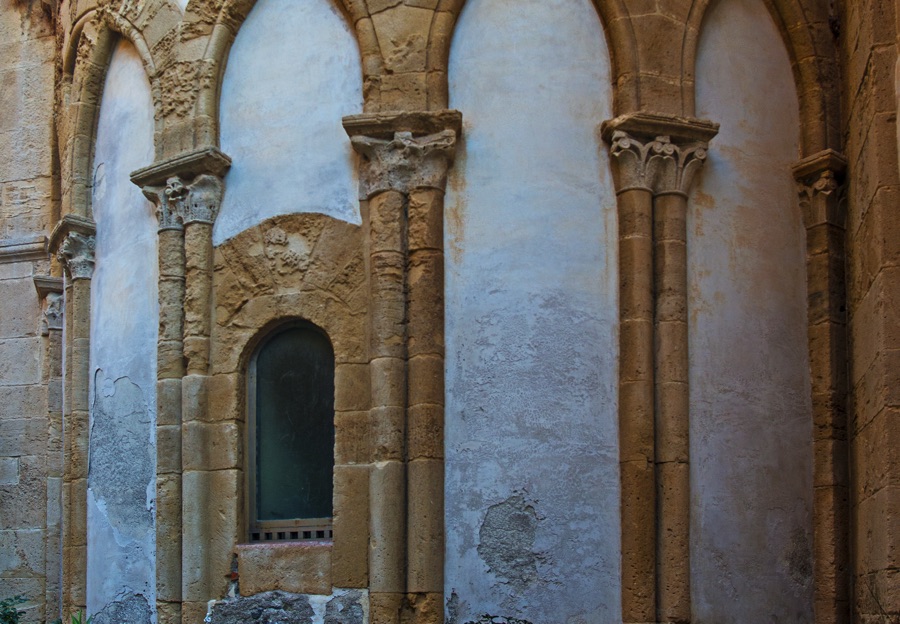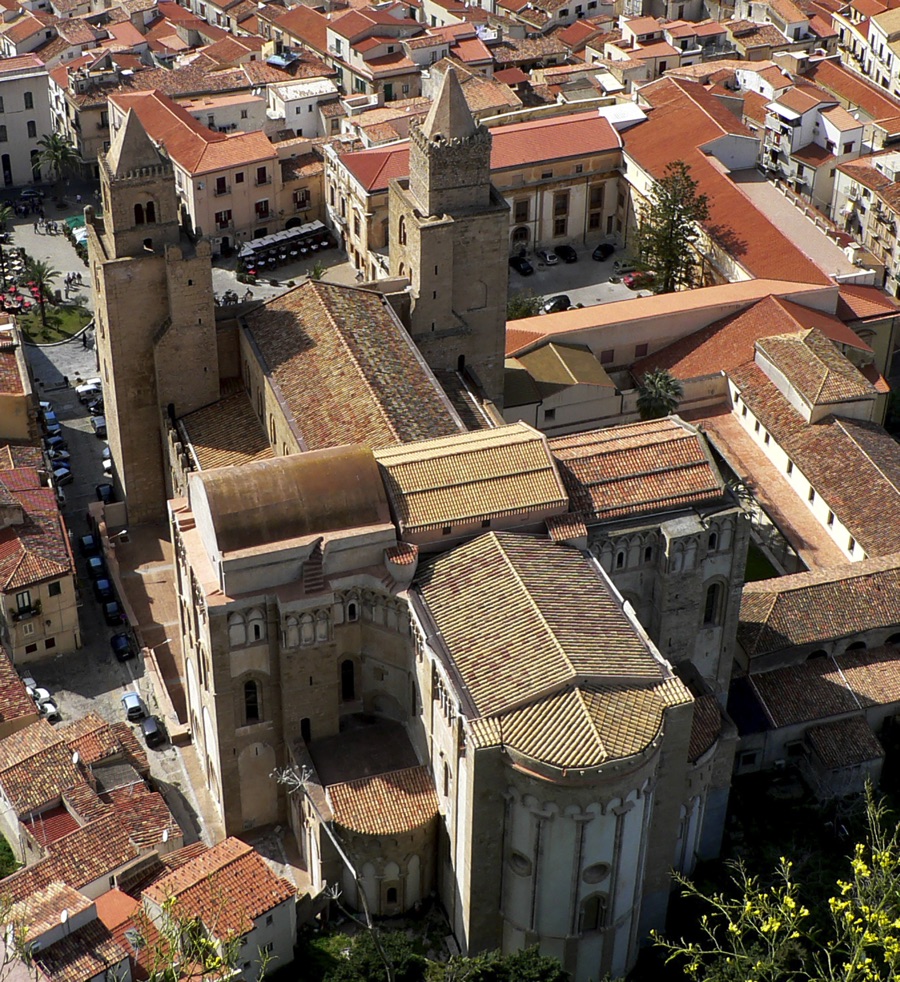
The decoration of the external architectural part of the three
apses
has the common feature of paired columns, which divide the semi-spherical surface, ending, in the central apse, with a fringe of elegant
blind single-lancet arches
, arranged in an alternating rhythm of evident Romanesque origin.
 The oculi were inserted in the space between the columns, in the middle position, according to a plan that was abandoned after a few years because the internal mosaic decoration concealed their presence. The side apses, on the other hand, are influenced by Islamic architecture with their typical
intertwining arches
The oculi were inserted in the space between the columns, in the middle position, according to a plan that was abandoned after a few years because the internal mosaic decoration concealed their presence. The side apses, on the other hand, are influenced by Islamic architecture with their typical
intertwining arches
.
The presence of large
oculi
, both in the central apse and in the transept, is reminiscent of
Burgundian architecture
, confirming the activity of workers of different origins on the site.
The distinctive feature at the end of the outer transept is the lively decoration, with small columns and blind arches corresponding to the internal walkway and loggia.
 The roofs of these areas of the complex are different in relation to the rooms because of the many disruptions in construction affecting some parts of the Cathedral. The most evident defect, probably the result of a fire in the 16th century, concerns the southern arm of the transept, because of the presence of a high
barrel vault
The roofs of these areas of the complex are different in relation to the rooms because of the many disruptions in construction affecting some parts of the Cathedral. The most evident defect, probably the result of a fire in the 16th century, concerns the southern arm of the transept, because of the presence of a high
barrel vault
, made of bricks and featuring with false
ribs
on the inside.